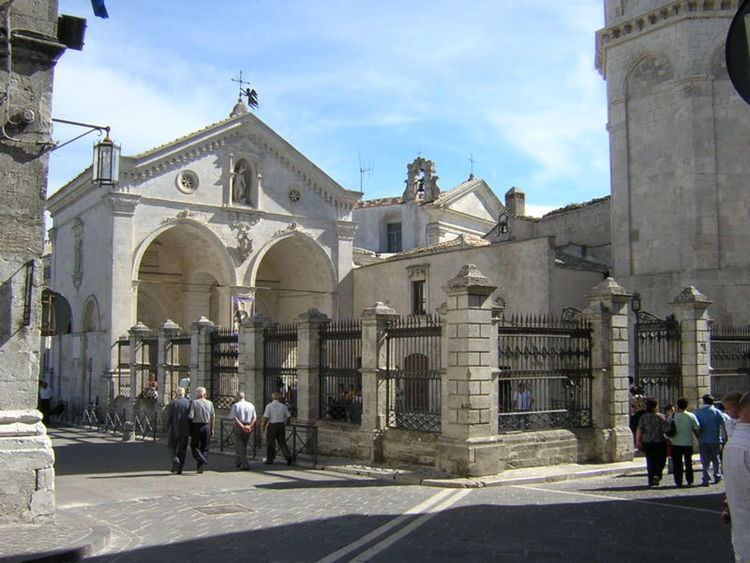Country Italy Demonym(s) Montanari | Elevation 796 m (2,612 ft) Local time Saturday 1:34 AM | |
 | ||
Frazioni Marina di Monte Sant’Angelo (Macchia), Ruggiano Weather 11°C, Wind NW at 16 km/h, 36% Humidity Points of interest Sanctuary of Monte Sant'Angelo, Castello Normanno Svevo Ar, Museo Arti e Tradizioni, Museo Arti e Tradizioni | ||
Monte Sant'Angelo is a town and comune of Apulia, southern Italy, in the province of Foggia, on the southern slopes of Monte Gargano.
Contents
- Map of 71037 Monte SantAngelo Province of Foggia Italy
- History
- Main sights
- Economy
- Employment
- Transportation
- International relations
- References
Map of 71037 Monte Sant'Angelo Province of Foggia, Italy
History
Monte Sant'Angelo as a town appeared only in the 11th century. Between 1081 and 1103, Monte Sant'Angelo was the capital of a large Norman dominion under the control of Count Henry, who was a vassal of the Byzantine Empire. The grotto which houses the Sanctuary of Saint Michael the Archangel where according to legend, St. Michael appeared in 490, 492 and 493, has been the site of many famous pilgrimages, which started from Mont Saint-Michel. Pope John Paul II visited the sanctuary in 1987.
In the 17th century the city became part of the Kingdom of Naples, to which it belonged until the unification of Italy in the 19th century.
Main sights
The most important attraction of Monte Sant'Angelo is the Sanctuary of Monte Sant'Angelo, built in the 13th century by Charles I of Anjou. On June 25, 2011 the The World Heritage Committee has inscribed the Sanctuary of San Michele Arcangelo in Monte Sant'Angelo on the UNESCO World Heritage List. The Sanctuary is one of the seven groups of historic buildings included in the World Heritage Site "Longobards in Italy. Places of the power (568-774 A.D.)".
Other sights of Monte Sant'Angelo include:
Economy
Monte Sant'Angelo's economy is still largely based on agriculture and breeding. A certain touristical importance is related to the presence of the Sanctuary of Saint Michael the Archangel.
Employment
The majority of the working population own farmland, raise cattle, run bakeries, restaurants, or stores. Often stores and businesses are family owned.
The population of Monte Sant'Angelo remains relatively small due to lack of employment in town. Often, young men leave to find work in nearby Manfredonia or elsewhere. Due to this the majority of the population is retired and elderly.
Transportation
Monte Sant'Angelo can be reached by road through the Foggia-Monte Sant'Angelo SP.55 provincial road. The SP.89 provincial road passes through the frazione of Macchia.
International relations
Monte Sant'Angelo is twinned with:
